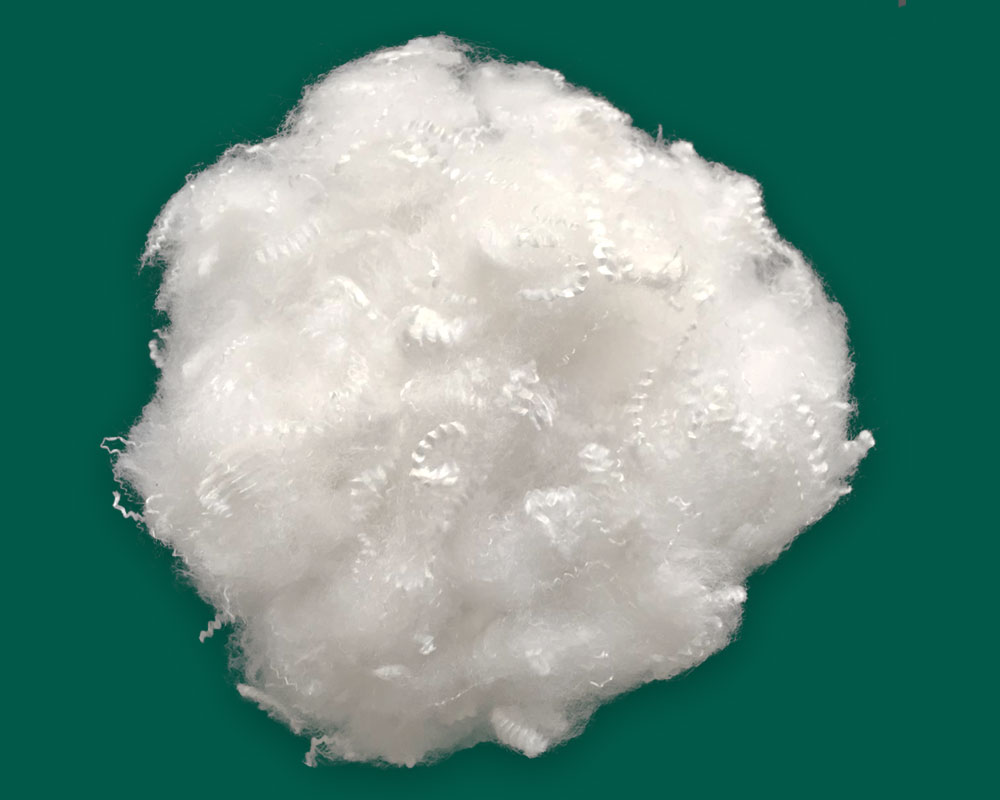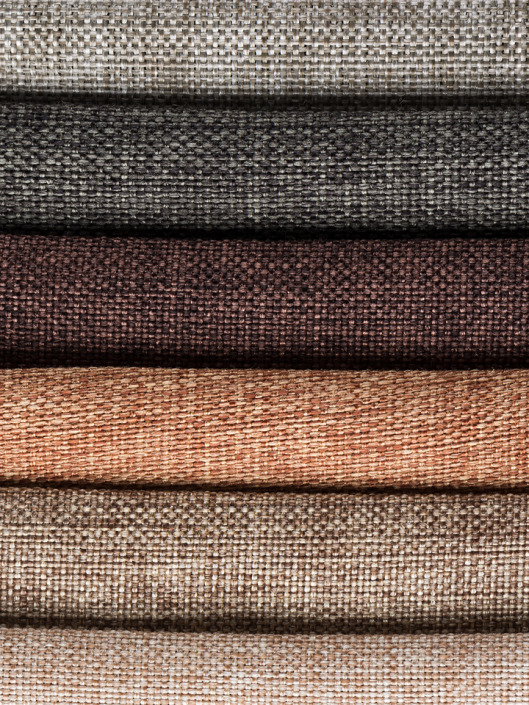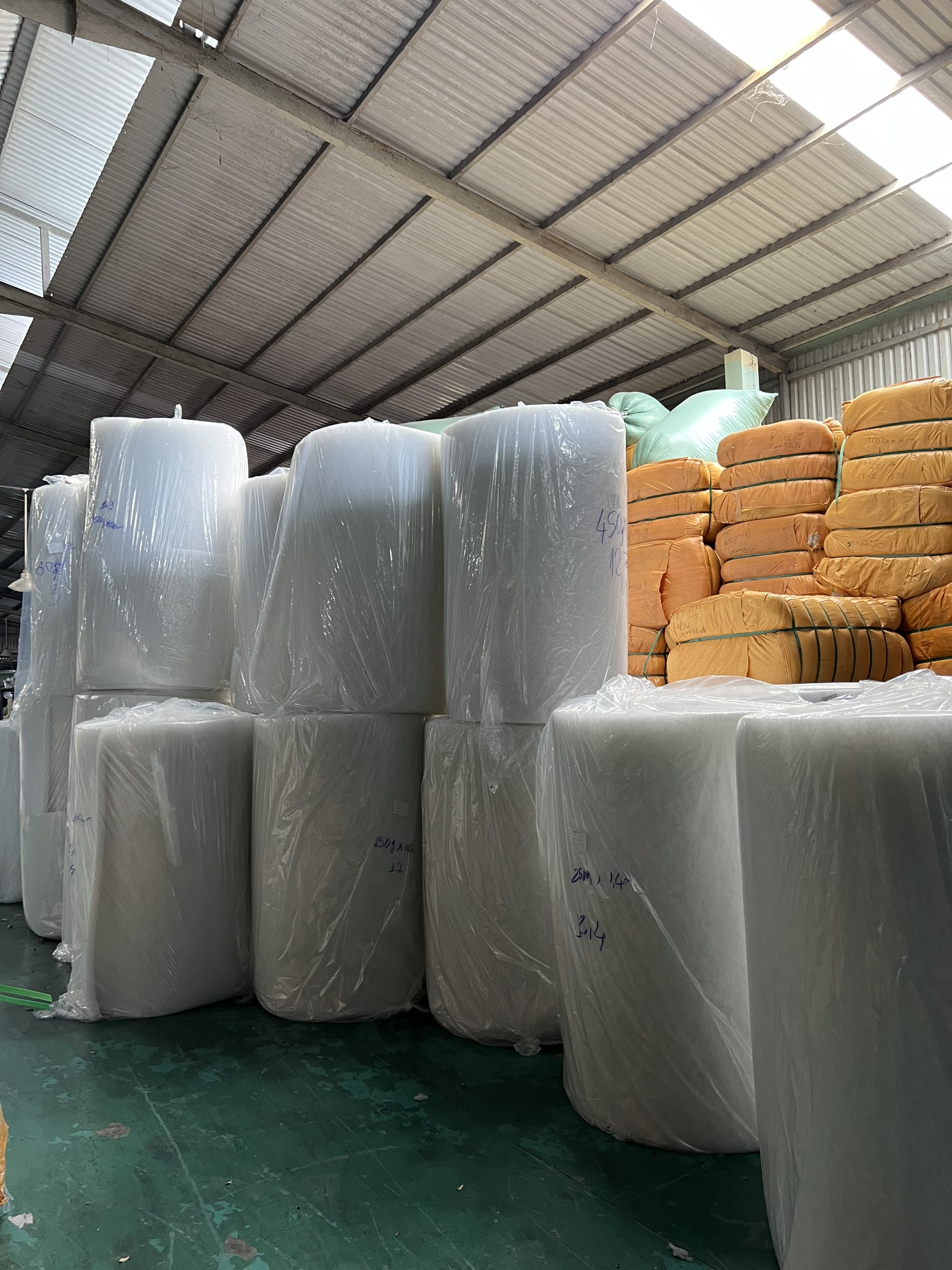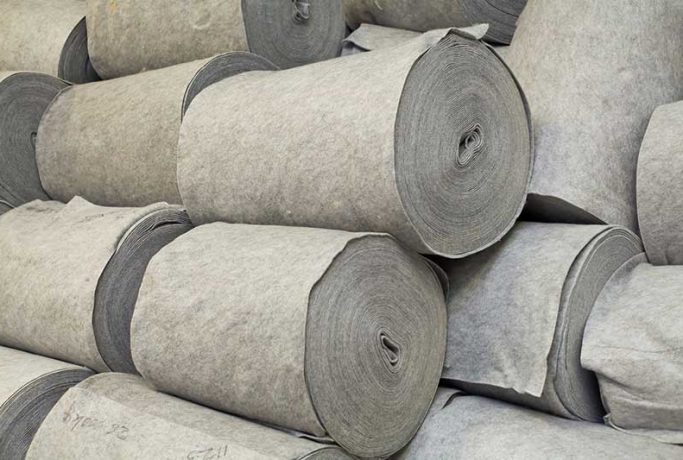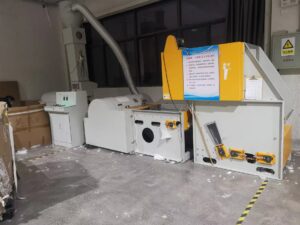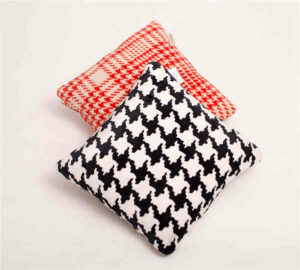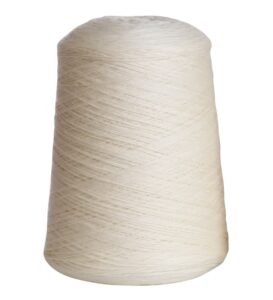What are fibers?
Fibers are slender elements that have a high length compared to their width. They are known for being flexible and thin.
These fibers are composed of macromolecules called polymers, which are made up of monomers. Polymers are stable chemically, while monomers are unstable, leading to their reaction and formation of the polymer.
The length of the polymer is crucial, as most fibers have long polymer chains. Fibers can have a highly oriented molecular structure, forming crystalline regions where polymers align parallel to each other. Alternatively, fibers can have slightly oriented structures, creating amorphous regions without a defined alignment.
Highly oriented polymers give fibers strong tensile strength, heat resistance, and chemical resistance. In contrast, the amorphous areas of slightly oriented polymers provide flexibility, softness, and comfort.
Fibers can be classified based on various factors:
– Length: Fibers can be discontinuous, limited to a few centimeters, or continuous, with lengths only limited by technical reasons.
– Origin: Fibers can be natural or man-made, with man-made fibers further categorized as artificial, synthetic, or inorganic. Natural fibers can be derived from animals, plants, or minerals.
Types of fibers
Natural Fibers
Natural fibers are categorized based on their origin into animal, vegetable, or mineral sources.
Animal fibers can come from glandular secretions of insects, like silk, or follicle bulbs of animals, such as wool.
Vegetable fibers have elongated structures primarily made of cellulose, with varying origins like seed, stem, leaf, and fruit fibers.
Compared to traditional man-made fibers, vegetable fibers offer benefits such as abundance, affordability, low density, carbon dioxide absorption, renewability, and biodegradability. However, they do have drawbacks like high moisture absorption, susceptibility to micro-organisms, low thermal stability, and weaker mechanical properties.
Mineral fibers originate from rocks with a fibrous structure, primarily composed of silicates, with asbestos being a notable example.
Non-batural Fibers
Various types of fibers have been developed to enhance properties like mechanical efficiency, thermal stability, and electrical conductivity when compared to natural fibers. These fibers are known as man-made and can be categorized as either artificial or synthetic.
The process of obtaining these fibers involves the use of chemical agents to extract natural polymers and undergo extrusion processes. The most common precursor for these fibers is cellulose derived from sources like cotton, eucalyptus, bamboo, soybean, maize, etc. Other precursors like casein or algal alginate may also be utilized.
Synthetic fibers are typically produced from chemical precursors derived from oil, resulting in a wide range of materials with diverse properties. The introduction of synthetic fibers has expanded the applications of fiber-based materials significantly due to their physical, chemical, and mechanical properties.
Materials like polyester, polyamide, or polypropylene have quickly gained popularity in various industries beyond clothing and textiles, including medicine, transportation, aerospace, construction, among others.
Inorganic Fibers
Inorganic fibers primarily consist of chemicals based on natural elements like carbon, silicon, and boron. Through treatment at high temperatures, these elements are transformed into fibers.
Inorganic fibers, sometimes referred to as high-performance or super-fibers, possess unique characteristics and properties that differentiate them from other non-natural fibers. As a result, they are less commonly used in conventional textiles.
These fibers offer high thermal and mechanical resistance, making them ideal for engineering solutions, often used in combination with other materials like composites. Despite their advantageous properties, inorganic fibers are challenging to process using traditional textile techniques due to their low flexibility and high coefficients of friction with metals.
Functional Fibers
Advances in fiber production have led to the development of functional fibers that meet specific market needs. These fibers go beyond aesthetic purposes and possess unique properties that allow them to react to external stimuli, such as changes in temperature.
Functional fibers are designed to perform specific functions, offering innovative features that set them apart from conventional fibers. This functionality can be achieved through intrinsic polymer characteristics, the addition of specific compounds during processing, or chemical finishing post-production.
Examples of functional fibers include antimicrobial, thermoregulating, moisture-resistant, shape memory, and conductive fibers, among others.
Nanofibers
Nanofibers, a product of nanosciences and nanotechnology, are currently a focal point of research and innovation. These fibers are typically produced through electrostatic spinning using polymers like polyethylene, polypropylene, polyamide, etc.
With properties unique to their nanometer scale, nanofibers find application in various fields such as high-performance filters, absorbent composite materials, dressing materials, implants for controlled drug delivery, and more. Their high surface area, aspect ratio, and biomimetic potential make them attractive for emerging technologies.
Nanofibers refer to wire-like materials with a certain aspect ratio, and their cross-sectional diameters are tens to hundreds of nanometers. Nanofibers have extremely high specific surface areas and are capable of forming highly porous network networks with significant interconnectivity between pores, making them attractive options for many advanced applications. Nanofibers are mainly made from polymer raw materials through different spinning techniques, including natural polymers and synthetic polymers.
Features
When the fiber size reaches the nanoscale, its physical and chemical properties will change, mainly in the following aspects:
- Surface Effect
The smaller the particle size, the larger the surface area. Since the surface particles lack the coordination of adjacent atoms, the surface energy is extremely unstable, and it is easy to combine with other atoms, showing strong activity. - Small Size Effect
Due to the increase in specific surface area and the decrease in volume, the reactivity and selectivity are significantly improved, and ultra-low consumption can be realized. As the fiber diameter is nanosized, the acoustic, optical, electromagnetic, and thermodynamic properties of the material will change. - Supramolecular Arrangement Effect
Due to the regular arrangement of molecules, self-organization can be achieved, so that unified functions can be displayed. - Hierarchy Effect
Namely, a new effect due to the nano-hierarchical structure at the level of nano-polymer chains.
Applications
- Energy and Storage Applications
Nanofibers have received extensive attention in energy production and storage. Specific application examples include batteries and fuel cells, solar cells, supercapacitors, hydrogen storage and production, piezoelectricity, and more.
Nanofibers for lithium ion battery application. [1]
- Environmental Applications
Combined with the structural and performance characteristics, nanofibers have great potential for environmental applications. Both pristine and adsorbent or catalyst functionalized nanofibrous materials have been actively prepared for the removal or separation of submicron contaminants and pollutants from liquid and gaseous environments based on various physical and chemical techniques, notably adsorption and ultrafiltration. Nanofiber-based photocatalysis has also been intensively studied for the degradation of pollutants and various toxic environmental chemicals. Furthermore, nanofibers synthesized from metal oxide semiconductors have been actively explored in many chemical and gas sensing applications, including air quality detection, toxic and flammable gas detection, and environmental monitoring. - Biomedical Applications
Biomedical applications are also one of the emerging applications of nanofibers. In healthcare and biomedical engineering, nanofibers can be used in tissue engineering and regenerative medicine, wound dressings, drug and therapeutic agent delivery, biosensing, and more. Numerous methods have been developed to fabricate nanofibers, such as phase separation, electrospinning, melt blowing, bicomponent spinning, force spinning, flash spinning, template synthesis, and self-assembly. Due to their biomimetic properties and easy-to-design nanostructures, nanofibers are of continued interest. [2]
New forms of electrospun nanofiber materials and their biomedical applications.
Multicomponent Fibers
Multicomponent fibers combine two or more polymers with different properties or chemical compositions. By extruding these polymers together, the resulting fiber can exhibit a blend of their respective characteristics.
The manufacturing process for multicomponent fibers allows for customization of properties by combining different polymers and additives. This technology is utilized to produce fibers with varying characteristics like color, linear mass, and polymer composition.
One common example of multicomponent fibers involves combining polyethylene and polypropylene for nonwovens, resulting in lightweight, strong, soft, and abrasion-resistant materials. These fibers have broad applications in various industries and are anticipated to play a significant role as engineering materials in the future.
Application of fibers in Architecture
In the field of architecture, fibrous materials offer a wide range of possibilities due to their unique properties such as ease of handling, lightness, and flexibility. These materials enable architects to explore innovative approaches in design. Recently, the use of fibrous materials in architectural membranes has led to the construction of public buildings, such as airports and sports stadiums, that are not only lighter but also more functional. Additionally, architectural membranes have provided stable and durable solutions for pneumatic structures, meeting the specific needs of temporary buildings. Fibrous materials also offer functional benefits such as self-cleaning, odor control, thermal insulation, and lightness when used as elements in partitions.
The most commonly used fibrous materials in architecture include polyamide, polyethylene, polyester, glass, and optical fiber. Architectural membranes are typically created by impregnating fibrous structures with polymers like polyvinyl chloride, silicone, and poly(tetrafluoroethylene). These polymers enhance the mechanical strength of the materials, provide protection against UV rays, ensure impermeability, and offer various other properties. Compared to traditional materials like steel, wood, or concrete, fibrous materials give architects more freedom in design.
Architectural Membranes
Innovative polymeric coatings combined with high-performance synthetic fibers have resulted in composite materials known as architectural membranes. These membranes possess qualities like high mechanical resistance, hydrophobicity, and resistance to rot and fungi, making them ideal for use in modern architectural projects. Architectural membranes can withstand extreme conditions such as sunlight, temperature variations, biological exposure, and weather elements like wind, rain, and snow. One of the main advantages of using architectural membranes is their lightweight nature, which is only a fraction compared to traditional roofing materials. This not only reduces construction costs but also allows for minimal roofing support structures, further cutting down on expenses. Additionally, architectural membranes offer design flexibility, sustainability, conformability, and energy efficiency, resulting in savings on materials, manpower, and energy consumption.
Functional Panels
Recently, innovative fibrous reinforcements have been utilized in panel systems to create not only aesthetically pleasing but also highly functional surfaces. These panels offer impermeability, greater mechanical resistance, self-cleaning properties, fire resistance, integrated materials with phase change capabilities for temperature regulation, and versatility in design. Components such as 3D fibrous structures, sandwich-type polymeric composites reinforced with fibers, architectural membranes, directionally oriented structures, fabrics with optical fibers, and transparent concrete with optical fiber are used in the construction of these panels. These panels can be modular, allowing integration of operational components like power outlets, washbasins, water supply systems, and more.
Functional Fabrics
Odor Control
Fibrous structures can incorporate odor control technology through microencapsulation, which involves microcapsules containing substances that trap bad odors and emit fragrances. These microcapsules have a protective coating that releases their contents via physical pressure, friction, diffusion, dissolution, or biodegradation.
Thermoregulation
Phase change materials (PCMs) are used in fibrous systems to regulate temperature fluctuations by changing states from solid to liquid and vice versa, storing or releasing heat. Microcapsules encapsulating PCMs are incorporated into fibrous materials to enhance their thermoregulation properties.
Self-Cleaning
Self-cleaning fibrous materials mimic the Lotus plant by incorporating nanotechnology to create water-repellent surfaces that prevent dirt accumulation. Antibacterial and antiallergic protection is achieved by functionalizing fibers with agents like silver ions.
Lighting
Electronic fibrous materials can emit light by using conductive fibers for energy transfer. These materials have the potential to reduce the use of traditional lamps in the future.
Application of fibers in Building
Fibrous materials offer interesting solutions for the construction industry in applications such as concrete reinforcement, soil stabilization, and thermal and acoustic insulation. Fibrous materials used in construction include glass, carbon, aramid, basalt, and natural fibers. The advantages of these materials are:
– Excellent ratio of weight to strength, with higher mechanical properties than steel for reduced weight
– Good thermal insulation properties
– Effective acoustic insulation
– Resistance to chemical/biological factors (corrosion, microorganisms, etc.)
– Compatibility with the soil (geotextiles)
– Ability to be structured into textiles, nonwovens, and composites to meet specific application requirements
– Potential for intelligent monitoring
One of the key benefits of using fibrous materials in buildings is the significant reduction in weight compared to traditional materials.
Structural Monitoring
The use of monitoring systems for maintaining and ensuring the safety of built structures is considered essential. It is crucial not only for the safety of users but also for the functionality and longevity of infrastructures like bridges, roads, buildings, and dams. The rise in structural failures due to environmental conditions and natural disasters in recent years has led to extensive research on developing more cost-effective and efficient monitoring systems to prevent catastrophic events and provide timely warnings.
Current monitoring systems rely on sensors, which can be integrated within structures or placed on their surface. Technologies in this field include wireless sensor networks, fiber optic sensors, vibration sensors, and displacement-based GPS sensors, among others.
Isolation
Energy consumption is a significant factor in building sustainability, and effective thermal insulation systems are vital for reducing heating, ventilation, and air conditioning costs. Fibrous materials play a key role in thermal and acoustic insulation, offering versatility in shapes (blankets, panels, foams) and ease of installation and handling. Inorganic fiber blankets, organic foams, and natural organic materials are commonly used as insulators for their lightweight, mechanical resistance, and insulating properties.
Application of fibers in Geotextiles
Geotextiles, made of synthetic or natural fibers, have various applications in construction such as waterproofing protection, reinforcement, filtration, and chemical barriers. They are part of a group of geosynthetic materials that also includes geomembranes, geotextiles, and geogrids, as well as geocomposites. Geotextiles are essential for enhancing the performance and durability of infrastructures and hydraulic works.
Concrete Reinforcement
Concrete, known for its high compressive strength but low tensile strength, requires reinforcement to withstand tensile stresses. While steel bars are traditionally used for reinforcement, short fibers can also be added to concrete to increase tensile strength and reduce cracking. The properties of fiber-reinforced concrete depend on the characteristics of the fiber, matrix, fiber-matrix interaction, and fiber dispersion within the cementitious matrix.
Anchoring Ocean Platforms
Engineers designing ocean platforms must consider environmental conditions like wind, waves, currents, sea water, hydrostatic pressure, and earthquakes. The use of fiber-based ropes and cables on ocean platforms has become increasingly common due to the superior mechanical properties and corrosion resistance compared to traditional steel cables. Advances in rope and fiber production have revolutionized civil engineering in ocean environments, offering more durable and reliable solutions for anchoring structures.
Sports
Fibrous materials play a key role in various sports, being used in equipment and clothing to enhance athletes’ performance. These materials offer advantages such as reduced weight, better durability, elasticity, and overall improved mechanical performance.
Common fibers used in sports applications include polyester, polyamide, polypropylene, acrylic, spandex, carbon, aramid, and high-performance fibers. These materials are chosen for their tactile properties, moisture-wicking capabilities, breathability, design flexibility, thermal insulation, and overall comfort.
Sportswear, specifically designed for sports activities, focuses on providing comfort and efficiency in body thermoregulation and moisture transfer to optimize athletes’ performance. In recent years, advancements in fibrous materials have led to the development of “smart fabrics” that enhance athletic benefits and minimize drawbacks.
The use of fibrous composites in sports equipment offers advantages such as ease of transport, weight reduction, durability, and reduced maintenance. Materials such as glass and carbon fibers with polymer matrices have replaced traditional materials, providing greater resistance, rigidity, fatigue resistance, and cushioning.
Overall, the choice of fibrous materials and design in sports clothing and equipment plays a crucial role in enhancing athletes’ performance and comfort during physical activities.
Medical Fibrous Materials
Fibrous materials play a crucial role in various medical applications, catering to the specific needs of healthcare and well-being sectors. These materials are essential for medical, surgical, and post-surgical treatments, offering properties like flexibility, strength, biocompatibility, and porosity.
Common fibers used in medical applications include cotton, polyurethane, polypropylene, polyester, and bio-absorbable fibers like chitin and collagen. These materials are utilized in a variety of products such as implantable surgical materials, non-implantable surgical materials, extra-body devices, and healthcare/hygiene products.
Implantable materials, like artificial tendons and prosthetics, require biomaterials with key characteristics such as biocompatibility, porosity, and non-toxicity. Mechanical strength is also crucial, determining the success of these implants. Polyamide is the most compatible fiber, while polytetrafluoroethylene is the least reactive material.
Non-implantable materials, used externally for wound care and bandages, must adhere to specific requirements like biocompatibility, non-toxicity, and antibacterial properties. These materials serve critical functions in promoting healing and preventing infections.
Extra body devices, like artificial kidneys and lungs, are integral for blood purification. These devices must meet stringent standards such as anti-allergic properties, high resistance to microorganisms, and the ability to be sterilized.
Health and hygiene products, including gowns, masks, and surgical drapes, are crucial in preventing the spread of infections. These products must provide comfort, be resistant to microorganisms, and be impermeable to liquids while allowing air permeability.
Overall, fibrous materials in the medical field serve a vital purpose in enhancing patient care and promoting overall well-being.
Protection
Fibrous materials play a crucial role in personal protection by safeguarding the user from potential harm or risks that could result in severe consequences.
These materials are utilized across various professional sectors including military, police, firefighters, welders, biologists, gardeners, electricians, and oil platform workers. Their use brings about significant benefits such as enhanced comfort, well-being, and safety.
Common fibers used in protection encompass polyester, polyamide, aramid, acrylic, polyethylene, and elastane, each offering distinct functional features like thermoregulation, flame resistance, impact and puncture resistance, and antimicrobial protection.
Fibrous materials provide protection in different areas such as thermal protection (e.g., firefighter suits for extreme heat or cold), chemical protection (safeguard against harmful substances), mechanical protection (defense against cutting, drilling, abrasion, or ballistic impact), and biological protection (shielding from microorganisms).
When it comes to thermal protection, whether against heat and flame or extreme cold, the materials must meet specific requirements like material integrity, liquid repellency, and thermal insulation. The choice between flame-resistant materials and those providing resistance to environmental elements like wind and cold is crucial.
For protection against heat and flame, it is important to select flame retardant fibers, as illustrated in the table.
| Generic Name | Trade mark | Features |
| Aramid (Meta) | Nomex | Excellent durability and chemical resistance |
| Aramid (Para) | Kermel; Kevlar; Twaron | Excellent resistance to breakage and abrasion |
| Modacrylic | SEF; Kanecaron | Excellent chemical and abrasion resistance High thermal shrinkage |
| Polyamide | P84 | High thermal shrinkageLower thermal properties than meta-aramid fiber |
| Vinal | Vinex FR9B | Very sensitive to shrinkage |
Fibers like cotton, viscose, polyethylene, and polypropylene are unsuitable due to their flammability.
In the case of protection from the cold, fibers like wool, polyester, polyamide, and polypropylene are preferred for their excellent thermal insulation properties, especially hollow fibers that trap air for improved isolation from extreme weather conditions.
Chemical protection involves handling or exposure to chemicals in various forms, necessitating clothing that is resistant, durable, flexible, thermally resistant, and easy to clean. Fibers like polypropylene, polyethylene, and polyester are commonly used for their chemical resistance and other beneficial properties.
Mechanical protection includes defense against abrasion, cutting, drilling, or impact (e.g., ballistics). Aramid and ultra-high molecular weight polyethylene fibers are utilized due to their abrasion resistance, thermal insulation, mechanical strength, and lightweight properties.
Biological protection combines antimicrobial, antifungal, and anti-dust mite protection, crucial for professionals exposed to bacteria, fungi, or mites. Silver ions infused in fibers are widely employed for biological protection, disrupting vital functions of bacteria upon contact and ultimately leading to their demise.
Mobility and Fibrous Materials in Transport Systems
Fibrous materials play a crucial role in various transport systems to enhance comfort, safety, and overall efficiency. These materials are utilized in insulation and interior lining of vehicles such as cars, planes, trains, as well as in safety features like airbags, seat belts, and tire reinforcement. Moreover, fibrous materials contribute to weight reduction and thereby facilitate a decrease in CO2 emissions, for instance, through the application of composite materials in different structural components of transportation vehicles.
Polyester and polyamide fibers are commonly employed in enhancing safety features like seat belts and airbags. In the pursuit of weight reduction and emission control, carbon, aramid, and natural fibers (such as flax, hemp, and coconut) are used in conjunction with polymeric matrices like epoxy or polyester.
Furthermore, materials like polypropylene, wool, polyester, and viscose fibers are frequently utilized in transport vehicles to provide comfort to passengers.
Enhancing Land Mobility
Public transport systems, including buses and trains, necessitate robust and resilient fibrous materials due to their high passenger capacity and increased frequency of travel. These materials are required to exhibit qualities like high resistance to abrasion, tear and perforation resistance, resistance to water absorption, dirt, and light, flame resistance, and easy cleaning properties.
In the context of heavy vehicles, truck covers, commonly known as tarpaulins, serve as essential accessories for reducing air resistance and improving aerodynamics. These covers are typically produced by coating processes using a textile substrate in combination with a polymer. Materials like polyamide and polyester fabrics coated with polyvinyl chloride (PVC) are preferred due to their high resistance, elasticity, and abrasion resistance properties.
Promoting Aerial Mobility
In the realm of air transport systems, safety and weight reduction remain paramount concerns, with a particular focus on addressing issues related to flammability and fuel efficiency. Fiber materials play a crucial role in enhancing safety by incorporating flame retardant fibers like Trevira CS fiber in areas such as seats, carpets, and curtains.
Fiber-reinforced composite materials are extensively utilized in aircraft and helicopter structures to achieve weight reduction and improve overall performance. Carbon and glass fibers are the materials of choice due to their high rigidity, low weight, energy absorption, and excellent mechanical properties.
Fostering Sea Mobility
Maritime transport relies on fibrous materials for applications in sails, nautical cables, thermal and acoustic insulation, as well as composite materials for boat hulls. Materials like polyamide, polyester, carbon, and glass fibers are utilized in various marine components, each offering specific advantages such as tear resistance, low water absorption, and resistance to sunlight.
Glass fibers are preferred for thermal and acoustic insulation due to their low thermal conductivity and versatility. Carbon, glass, and aramid fibers find applications in composite materials for boat hull construction, offering high rigidity, energy absorption, and excellent mechanical properties.
In conclusion, fibrous materials play a pivotal role in enhancing the mobility and safety of transport systems across air, land, and sea domains. By leveraging the unique properties of various fibers and composite materials, the transportation industry can achieve improvements in safety, efficiency, and environmental sustainability.
Read more:
https://vnpolyfiber.com/classification-of-textile-fibers/
https://vnpolyfiber.com/all-about-synthetic-fibers-and-fabrics/
https://vnpolyfiber.com/synthetic-fibers-vs-man-made-fibers-definitions-and-classifications/
https://vnpolyfiber.com/what-is-natural-fibers/
https://vnpolyfiber.com/all-about-fibers-definition-types-and-applications/


